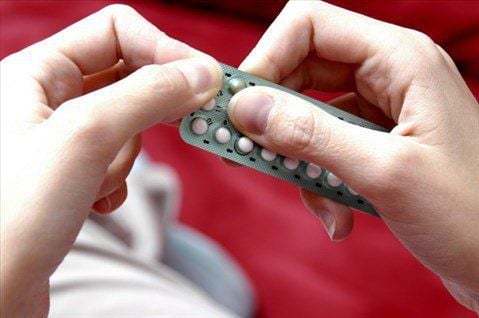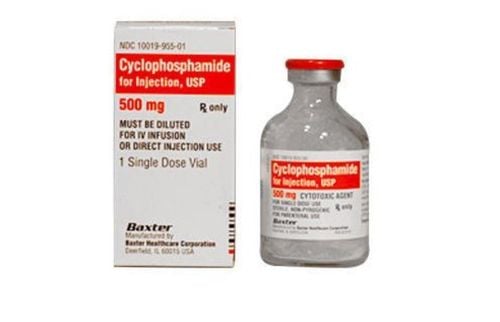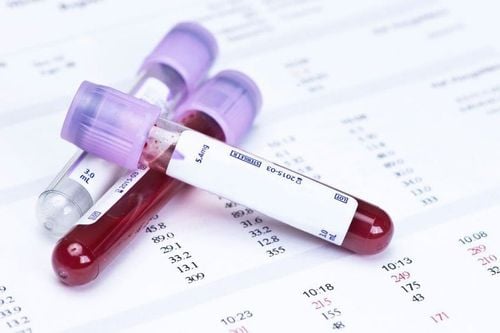This is an automatically translated article.
The desire for artificial insemination has been established for over 200 years through the injection of fresh semen into the uterus. In the world, IUI technique using washed sperm has been applied since 1970-1980. Currently, artificial insemination techniques are being applied most widely due to advances in sperm washing techniques and the ability to predict ovulation.
1. What is artificial insemination?
Artificial insemination, short for intrauterine insemination (IUI) is an insemination by intrauterine insemination - conducted by selecting the man's strongest sperm, then injecting it into the woman's uterus. wife at the time of ovulation.
As a result, sperm swims into the fallopian tube and fertilizes the wife's egg, thereby leading to normal conception. Depending on the cause of the infertility, IVF can be coordinated with the woman's menstrual cycle or used in combination with fertility drugs.
Trắc nghiệm: Bạn có hiểu đúng về dấu hiệu mang thai sớm?
Các dấu hiệu mang thai sớm không phải chỉ mỗi trễ kinh mà còn có rất nhiều dấu hiệu khác như xuất huyết âm đạo, ngực căng tức,… Điểm xem bạn biết được bao nhiêu dấu hiệu mang thai sớm thông qua bài trắc nghiệm này nhé!
2. Who is artificial insemination usually used for?
The ability of each couple to conceive depends on many different factors, so artificial insemination is usually indicated for the following cases:Single mother. For women who are not married but still want to have children, so they need to use donor sperm to get pregnant, artificial insemination techniques will be indicated and supported for single mothers. this. Donor sperm samples are stored frozen and obtained from accredited laboratories, then thawed prior to IVF. Infertility of unknown cause. IVF is often performed as the first line of treatment for couples with unexplained infertility, and it needs to be combined with medications that induce ovulation. Infertility associated with endometriosis. For endometriosis-related infertility, the use of medication to assist in obtaining good-quality eggs, along with artificial insemination, is often the first line of treatment. Infertile men. Semen analysis of infertile couples is one of the first steps in the medical evaluation of infertility in infertile couples, this test shows below-average sperm concentration, motility of weak or abnormal sperm size and shape. Artificial insemination technique can overcome some of the above problems so the technician will separate high-mobility sperm from the husband's sperm sample of good quality to be ready for IVF.

Cervical factors lead to infertility. The cervix is the lowest part of the uterus, where the uterus and the vaginal wall meet. It is located 7.6 to 15.2 centimeters inside and at the end of the vaginal tract. The mucus produced by the cervix around the time of ovulation creates the ideal environment for sperm to travel from the vagina to the fallopian tubes. But, if cervical mucus is too thick, it can interfere with sperm's journey. The cervix itself can also prevent sperm from reaching the egg. Or cervical scarring caused by biopsies or other procedures can cause the cervix to thicken. The artificial insemination technique will go through your cervix, placing sperm directly into the uterus. Ovulation factors lead to infertility. IVF can also be performed for women who are infertile due to problems with ovulation, including not ovulating or reducing the number of eggs. Women who are allergic to semen. In this rare case, a woman may be allergic to the protein in her husband's semen. When ejaculating into the vagina will lead to redness, burning and swelling where the semen comes in contact with the mucous membranes. Condoms can protect women from these symptoms, but they also prevent pregnancy. If a woman's sensitivity to semen is severe, artificial insemination will be effective in this case, as the proteins in the semen will be removed before the sperm is inserted into the vagina or the vagina. woman's uterus.
3. What are the risk factors when performing artificial insemination?
Artificial insemination is a relatively simple, safe procedure and the risk of serious complications is low. Possible risks include:
When the manipulation is too strong or the process of injecting sperm into the uterus encounters many difficulties, bleeding and damage to the uterus may occur. Using small syringes to optimize the delivery of semen into the uterus can also increase the risk of infection of the uterus and fallopian tubes. The cause is often due to sperm preparation techniques or not ensuring sterility when performing sperm injection techniques. Another cause is an infection during semen processing, which gives bacteria the opportunity to infect the uterus and ovaries. Multiple pregnancy. The artificial insemination technique itself is not associated with an increased risk of multiple pregnancies such as twins, triplets, or more. But, when combined with drugs that induce ovulation, the risk of multiple pregnancy is significantly increased. Multiple pregnancies have higher risks than singleton pregnancies, including early labor and low birth weight.
4. What do couples need to prepare for artificial insemination?

4.1 Preparation before the procedure Prepare a semen sample. The husband will get a semen sample from the doctor's office or use a frozen donor sperm sample. Because elements in semen can cause reactions in the woman's body that interfere with fertilization, this sperm sample is then filtered. This process will focus on healthy, tough sperm and then concentrate them into a small amount of solution. Egg production: Your doctor will probably let you ovulate naturally or stimulate ovulation through an IUI cycle without using ovulation medication. Ovulation stimulants may also be prescribed on the first day of your period to stimulate the ovaries to produce several mature eggs. Normally, a woman only gets one egg per month. Sperm washing: Once the egg is released, the husband will need to ejaculate and the sperm will then be washed. This process will focus on healthy, tough sperm and then concentrate them into a small amount of solution. Insemination: The doctor will use a long, thin catheter through the cervix to insert sperm into the uterus. The procedure is usually painless, but some women will experience mild cramping. Conception test: This test should be completed about 2 weeks after insemination. 4.2 During IVF While lying on the gynecological examination bed, the woman will put her foot in the stirrup and the speculum will be inserted into the vagina - similar to the gynecological exam. Next, the doctor or nurse will:
Use a long, thin catheter that contains healthy sperm Insert the catheter into the vagina through the opening of the cervix and into the uterus Push the sperm sample through the tube into the uterus Catheter and speculum removal Recommended video:
How does in vitro fertilization work?
4.3 After the IVF procedure After the insemination, the woman will be asked to lie on her back for a short period of time. When the procedure is over, the woman can get dressed, go home, and can do her normal daily activities.
After 2 weeks, the wife went to the hospital to check the results. Thus, with favorable cases, from the time of artificial insemination to knowing the results of pregnancy or not, it takes about 25-30 days. If you are pregnant, you will take care of your pregnancy and have regular antenatal check-ups.
In case not pregnant, the couple will be guided to have natural intercourse, after 2-3 months, return to perform the next artificial insemination.
Cases of artificial insemination many times failed, or the husband has weak sperm, low sperm count, malformed sperm; If the wife has a blocked fallopian tube or is older (≥ 40 years old), the patient will be counseled about in vitro fertilization, with or without related techniques such as intracytoplasmic sperm injection (ICSI), Spermectomy (PESA/MESA), in vitro egg maturation (IVM), assisted drainage techniques...
5. So is artificial insemination my baby?
This is not only your own concern, but also the concern of many infertile couples. The fear of not having children has limited and greatly influenced the decisions of couples when performing artificial insemination. Therefore, the control to avoid confusion of sperm, ovum and embryo samples is identified as an important issue that must be placed on top of all reproductive support centers. In fact, medical mistakes or incidents can happen in any hospital and any field. In assisted reproduction, confusion is a particularly serious and unacceptable incident because it has unpredictable consequences, affecting the family's happiness and the child's future. As a result, reputable fertility centers when performing in vitro fertilization implement a lot of rigorous procedures and steps to ensure that all errors are minimized.
For accurate examination and advice on intrauterine insemination (IUI) technique, customers can visit the Reproductive Support Center - Vinmec International General Hospital. This is the leading center in Vietnam, which has developed and applied a comprehensive medical examination and treatment process, combining both gynecology and obstetrics and gynecology to provide the optimal method for each patient's case.
Advantages when customers choose Vinmec fertility center”
Equipped with modern equipment, clean air system according to international standards to ensure lab quality, single incubator system to optimize quality embryo, improving the success rate for each cycle of artificial insemination. Implement most advanced assisted reproductive techniques in the world: ICSI (injection of sperm into the oocyte cytoplasm); support embryo escape membrane; Reproductive reserve: embryo freezing, sperm freezing, oocyte freezing to help customers take the initiative in giving birth at will, transferring embryos on day 5, minimizing pregnancy; male infertility techniques (PESA, MESA, TEFNA, TESE) Besides advanced reproductive support methods, a team of excellent doctors in the country and the world, with prestige and long-term experience in the field of infertility . Recommended video:
How long does it take for the embryos to implant after embryo transfer?
Please dial HOTLINE for more information or register for an appointment HERE. Download MyVinmec app to make appointments faster and to manage your bookings easily.
Reference source: Mayoclinic.org.












